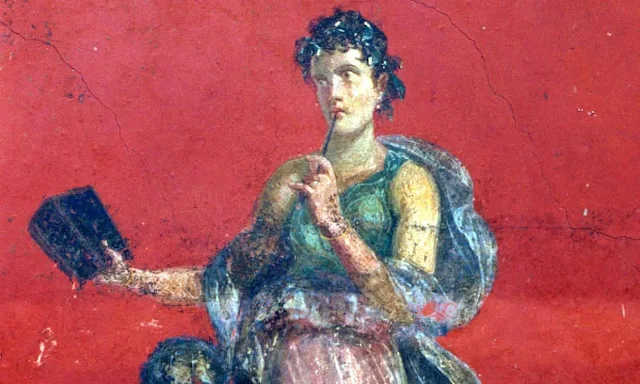 |
"And the classic shade/ Of cedar and pine..."
|
1.
Some people
may think it presumptuous to call a book of only a hundred short,
mainly lyrical
pieces of verse Collected Poems—but actually that is exactly what it is.
—A.J.M
Smith, Canadian Literature, (# 15, winter 1963)
Fifty
years ago A.J.M. Smith was one of our most prominent Canadian poets, since then
Smith's prominence has declined into obscurity. Smith was a poet but he was also
an anthologist, a critic, and someone who was important in the literary history
of Canada, but he is primarily important as a poet. The reason for Smith's
obscurity is his small body of poems, that he did not publish enough to be a
significant poet. In E.K. Brown's review of Smith's first book of poems, News of the Phoenix (1944), Brown
writes,
At
last Mr. Smith has brought out a collection of his own. My first feeling, at
the mere sight of the book,
was one of disappointment. It is a little book; it holds but thirty-nine poems, spread over about as many
pages; and among the thirty-nine are the twelve from New Provinces,
and others well known to the readers of more recent anthologies of Canadian verse. One had hoped for
evidence of greater fertility.
One may be justifiably disappointed at
the size of Smith's book but the book's real importance is its content, not the
number of pages, and beginning with the title poem there are some truly
exceptional poems in News of the Phoenix.
Brown mentions twice that Smith is not a "fertile" poet, seemingly to
reinforce his dislike for the book. But surely Brown knew that all poets are different; not all poets
are prolific, some poets stop writing when young, some have ten or twenty years
between books, and some write and publish more than they should. (Note: that both Brown and Smith published books on Canadian poetry in 1943 perhaps explains something of Brown's criticism of Smith's book; they were, in some sense, rivals with opposing views.) A few months
after publishing this review, Brown made an effort to soften his first reaction
to Smith's book by writing the following:
Finally,
just a few months ago, appeared Mr. Smith's "News of the Phoenix,"
long awaited in Canada, and in
perfection of technique undoubtedly the finest first volume since Archibald Lampman's
"Among the Millet" came out in 1888. Mr, Smith has undergone the same influences that
went to shape the difficult younger poets in this country. He is their analogue—and their peer. In his work
is a distinctive note, the note of a
temperament which is, as I have said elsewhere, "proud, hard, noble, and
intense."
This idea that Smith's work can
be dismissed based on his small body of published poems is repeated by Desmond
Pacey in his Ten Canadian Poets (1958);
Pacey writes that Smith "has produced a small body of poetry—only, in
fact, two slim volumes, the second of which reprints a good deal of the
contents of the first... " Pacey then writes,
To
call Smith a poet's poet seems to me to draw attention to his strengths and his limitations. He is a master
craftsman, a poet from whom other poets can learn many of the subtleties of technique; on the
other hand he has neither the explosive force, the musical charm, nor the clearly formulated set of ideas
which either singly or in some combination
make a poet a great popular figure.
Many contemporary readers will agree with Pacey's
assessment of Smith's poems; the poems emphasize craft over emotion and because of this they lack the capacity to hold our interest. To these
readers Smith's poems must seem disembodied from time and place, as though self-contained
and remote. This is the flaw in Smith's poetry: it is that technical skill
without emotional depth is a formula for obsolete poems; however, conversely,
emotion without technical skill is also a flaw in poetry. Having said this,
there is more to Smith's work than craft; there is imagination, insight,
intellectual depth, thematic cohesion, a restrained emotional content, and Smith's persistence to create a body of work that sustains its vision over many years.
These are the qualities that we overlook when we complain that Smith's poems
weigh too heavily on the side of craft.
About twenty years after E.K. Brown's
review was published, and five years after Pacey's book was published, Canadian
Literature (# 15, winter 1963) dedicated an issue to A.J.M. Smith; in this
issue, "Salute to A.J.M. Smith", Earle Birney used the same word as Brown,
"fertile", to criticize Smith; Birney writes, "As it turned out, Smith was to prove less fertile a poet than
most, and, though he was to continue to set us all high standards when he did
publish, his dominance was elsewhere." I could be totally wrong but until
reading E.K. Brown's statement that Smith is not a "fertile" poet, and
Birney's repetition of this, I had never heard of any poet, or any artist, referred to as "fertile" except as
having a fertile imagination.
2.
Most of the members of the Montreal Group are distinguished poets
(Leon Edel, a member of the group, was not a poet); all the poets but Leo
Kennedy won the Governor General's award for poetry (F.R. Scott won the GG two
times, once for non-fiction). Indeed, this is the preeminent group of poets—distinguished,
creative, and innovative—in Canada. If Smith didn't publish a lot of poems Leo
Kennedy published even fewer; John Glassco published only marginally more than
Smith. Glassco and Smith published two books each followed by Kennedy with his
one book. F.R. Scott published slightly more than A.M. Klein but only because
Scott lived longer than Klein. In sum, none of these poets were prolific.
Critics who complain that Smith was not "fertile" as a
poet don't understand the process of writing poetry which, simply put, is that
the Muse visits the poet, it doesn't work in reverse. As well, much of Smith's
published body of poems was written when he was young, the Muse often prefers young
poets over older poets; as an example of this, Coleridge was most prolific as a
poet for a two year period when he was twenty-five years old, from 1797 to 1799 (I am not conflating Coleridge with A.J.M. Smith). Smith's priority was the perfectly crafted poem, his ideal was a small collection
of about one hundred poems; this results in a small book because perfectly crafted poems take more time to write than poems that
need little editing. To explain this better, consider that Alex Colville,
although not a poet but a man of great technical skill, imagination, and vision; Colville produced only three or four paintings a year, but no one
ever said he wasn't "fertile". Smith encouraged an idea of the
importance of technical ability in poetry but when applied to his own work this was
interpreted as Smith not being "fertile" and then further interpreted
and misconstrued as his work not being significant.
All the members of
the Montreal Group (again, leaving out Leon Edel) published poetry but also worked
in other literary genres, for instance criticism, translation, and memoirs, or
as anthologists (Smith and F.R. Scott; Smith and M.L. Rosenthal). Some group
members were accomplished as poets but also in fields other than writing: F.R.
Scott was a distinguished constitutional lawyer and law professor; A.M. Klein was
a lawyer and publicist for the Bronfman family; Leo Kennedy made his living
from advertising; A.J.M. Smith was a man of letters. Let's compare Smith's body
of published books of poems with those of other members of the Montreal Group,
excluding posthumously published books, and see where Smith stands among them;
here is a list of the poetry books they published:
F.R.
Scott's books of poetry:
Poetry books:
- Overture. Toronto:
Ryerson Press, 1945.
- Events and
Signals.
Toronto: Ryerson Press, 1954.
- The Eye of
the Needle: Satire, Sorties, Sundries. Montreal: Contact
Press, 1957.
- Signature.
Vancouver: Klanak Press, 1964.
- Trouvailles:
Poems from Prose.
Montreal: Delta Canada, 1967.
- The Dance
is One.
Toronto: McClelland and Stewart, 1973.
Selected Poems:
- Selected
Poems.
Toronto: Oxford University Press, 1966.
A.M.
Klein's books of poetry:
Poetry:
- Hath Not a
Jew....
New York, Behrman Jewish Book House, 1940.
- Poems. Philadelphia:
Jewish Publication Society of America, 1944.
- The
Hitleriad.
Norfolk, CT.: New Directions, 1944.
- Seven Poems. Montreal:
The Author, 1947.
- The Rocking
Chair and Other Poems. Toronto: Ryerson Press, 1948.
John Glassco's books
of poetry:
Poetry Books:
- The
Deficit Made Flesh: Poems. Toronto: McClelland &
Stewart, 1958.
- A
Point of Sky.
Toronto: Oxford
University Press, 1964.
Chapbook:
- Montreal.
Montreal: DC Books, 1973.
Selected Poems:
- Selected
Poems.
Toronto: Oxford University Press, 1971.
A.J.M.
Smith's books of poetry:
Poetry Books:
- News of the
Phoenix and Other Poems. Toronto: Ryerson Press, 1943. New
York: Coward-McCann, 1943.
- A Sort of
Ecstasy.
Michigan State College Press, 1954. Toronto: Ryerson Press, 1954.
Selected Poems:
- Collected
Poems.
Toronto: Oxford University Press, 1962.
- Poems New
and Collected.
Toronto: Oxford University Press, 1967
- The Classic
Shade: Selected Poems. Toronto: McClelland Stewart, 1978
Leo Kennedy's poetry book:
Poetry Books:
 |
| A.J.M. Smith's family home in the 1920s, 79 Chesterfield Avenue, Westmount, Quebec |
3.
Here
are some quotations from Canadian Literature's "Salute to A.J.M.
Smith" issue (# 15, winter 1963). In 1963 Smith was still a prominent poet
and referred to with admiration and esteem by his contemporaries; he was
acknowledged as having made a substantial contribution to Canadian poetry.
- "This issue of Canadian Literature is in part a celebration
occasioned by the publication of the Collected Poems of A. J. M.
Smith, one of Canada's important writers and, since the 1930's, a poet of
international repute. It is an act of homage..." —George Woodcock
- "All help in the end to put this
collection, despite its spareness, among the most distinguished, I
believe, of the century." —Roy
Fuller
- "As I read the Collected Poems which
Oxford has just given us, I realize, as I never did before, just how all
of a piece, as well as how varied, Smith's work really is.
"Metaphysical poetry and pure poetry are what I stand for," he
has insisted. One may be justly dubious about his "metaphysical"
qualities, but he is as pure a poet as he is a critic." —Milton Wilson
4. A.J.M. Smith and M.L. Rosenthal
M.L.
Rosenthal was both a poet and a critic; in his introduction to A.J.M. Smith's The Classic Shade, Selected Poems (1978) Rosenthal writes with authority and insight into Smith's
poetry. Perhaps because Rosenthal is not Canadian he can appreciate Smith's
work in a way that Canadians can't; Rosenthal isn't encumbered with the
preconceptions native Canadians bring with them. It was Rosenthal who invented
the important descriptive phrase "confessional poetry" in his review of Robert Lowell's Life Studies,
a whole school of poetry is categorized as such, so Rosenthal is both
perceptive and influential. Rosenthal is also a poet and poets are often, if
not usually, the best critics of poetry and the most understanding of what
motivates poets to write. It is a failed critic who places ideology above the
work being discussed. Smith met Rosenthal at Michigan State College (now Michigan State University) in the 1930s when they were
both teaching there; Rosenthal moved on to teach at New York University but
they remained friends and together edited the anthology Exploring Poetry (1955). Here are several quotations by Rosenthal
from his 1977 essay on A.J.M. Smith, the essay is both the introduction to The Classic Shade and a separate essay that
was published elsewhere:
- "Smith, an important force in modern
Canadian poetry though still but little known in the United States, is an
active esthetic intelligence whose life's work (like that of most other
genuine poets of matured intelligence) refutes the very notion of an
"anxiety of influence" that reduces the power of poetry to renew
its energies because of its great past." P. 10
- "If we viewed Smith's complete oeuvre as a
unit, we would find in it analogous balancing of joy in the life-force and
more depressive visions." P.
12
- "In the Romantic-Classical debate, Smith
tends to vote Classical on principle while his poems actually throw the
balance of feeling and imagination a little the other way." P. 13
- "His (Smith's) ordinary humanity is
evident in his obvious preoccupation with love and death and joy, and in
his sense of language." P. 15
- "The nobility of his (Smith's) finest work
has many aspects. I believe it can partly be accounted for by his high
degree of empathic sensitization to the rhetoric of the most truly
accomplished lyrical poetry generally. But his unabashedly human hatred of
death is somehow another, and of necessity a more passionate, source. One
rarely finds the position held with such thrilling clarity in poetry. The
language is the pure, sustained, and subtle speech of a poet who sees his
own nature as a relationship between his art and his fate." P. 19
5.
He will go far, for he is
genuine, and gifted.
—F.R. Scott, diary entry on A.J.M.
Smith, 21 February 1927
Casual
readers of poetry should not be overlooked, any audience for poetry is
important. Casual readers don't care about the technical or historical
background of poetry—they don't care if A.J.M. Smith was influenced by the Metaphysical
Poets, they have probably never heard of the Metaphysical Poets—they like great
poems when they read poetry. This was my experience when I was young, I was
reading Palgrave's The Golden Treasury and read Shelley's "Ozymandias of Egypt" and immediately I knew I
was in the presence of something great, something that existed by itself, as
though it had always existed and always would exist. Great poems have a life of their
own, they transcend the rest of a poet's body of work and, again, one doesn't
need knowledge of the literary and historical era to enjoy reading them. These truly
great poems are experienced as "pure poetry", existing beyond time
and place; they are the kind of poem A.J.M. Smith wanted to write and, in fact,
did write. One or two of Smith's poems—"pure poems"— more than make
up for his small body of work; I refer to poems like "The Lonely
Land" and "Like an Old Proud King in a Parable", but there are others.
Roy Daniells, in his review of
Smith's The Classic Shade, Selected Poems (1978), published in Canadian Literature (# 79, winter
1978), positions Smith "as moving between two
worlds, one dying, as the tradition of Carman, Lampman and Roberts subsides,
one powerful to be born. ... How well has Smith provided a continuum, bridged
the gap, or at least navigated between these diversities?" Just over forty years later we have our
answer, Smith has not fared well. The reason Daniells gives for Smith's failure
to retain his prominence as a poet is demographic, he suggests that multiculturalism
has displaced the concept of a homogenous culture of which Smith was a
representative. Multiculturalism, as Daniells recognizes, is the society that
was still "powerful to be born." For Daniells, Smith might be too old
fashioned and even irrelevant to a contemporary multicultural audience; however,
he also writes, "It is certain
that a poet can become memorable on the strength of a handful of
poems that show a fine excess of sensibility and achieve a genuine utterance."
Louis
Dudek writes that it was Smith' s misfortune to publish his work in an era of
low art, a time when poetry was popularized and made easy to understand and when
high art was rejected by the public as uninteresting, inaccessible, and elitist.
In a review, published in Delta (# 20, February 1963), of Smith's Collected Poems (1963), Dudek writes,
"It may be that we find, in the end, that this was the most durable poetry
published in Canada in the forty or so years since Smith began. He is our miglior fabbro, and in the last resort
it is the fabbro that looks best to
immortality." As most readers will remember, T.S. Eliot referred to Ezra
Pound as "il miglior fabbro", the "better craftsman", in
thanks to Pound who had edited Eliot's "The Waste Land". This is high
praise from Dudek considering his adulation of Ezra Pound.
Most
poets never know prominence, they only know obscurity; A.J.M. Smith is
fortunate, he was once a prominent poet and deservedly so. Smith can be better appreciated
and understood today than when he was alive, today we can consider his oeuvre in
the context of the completion of both his life and his body of poems. The first
thing in a reappraisal of Smith's literary career is to stop diminishing his
accomplishment in poetry by saying he did not publish enough poems to be a
significant poet; Smith's body of poems is sufficient in size and, more
importantly, it is also significant as poetry. Some of Smith's poems transcend
the time in which they were written, they are the "pure poems" that
he wanted to write and they resonate in the reader's imagination. Smith's
status is probably somewhere between being a "minor poet" (to which
he resigned himself) and a "major poet"; in fact, he is neither minor
nor major, but he is one of our better poets. Smith's
poetry is a remarkable and incredible achievement but, as with any poet, he is
not everyone's cup of tea and reading Smith takes some work, it is not light
reading.
—Stephen
Morrissey
April-July 2019
NOTE: Do a search of this blog for other comments on A.J.M. Smith .





































